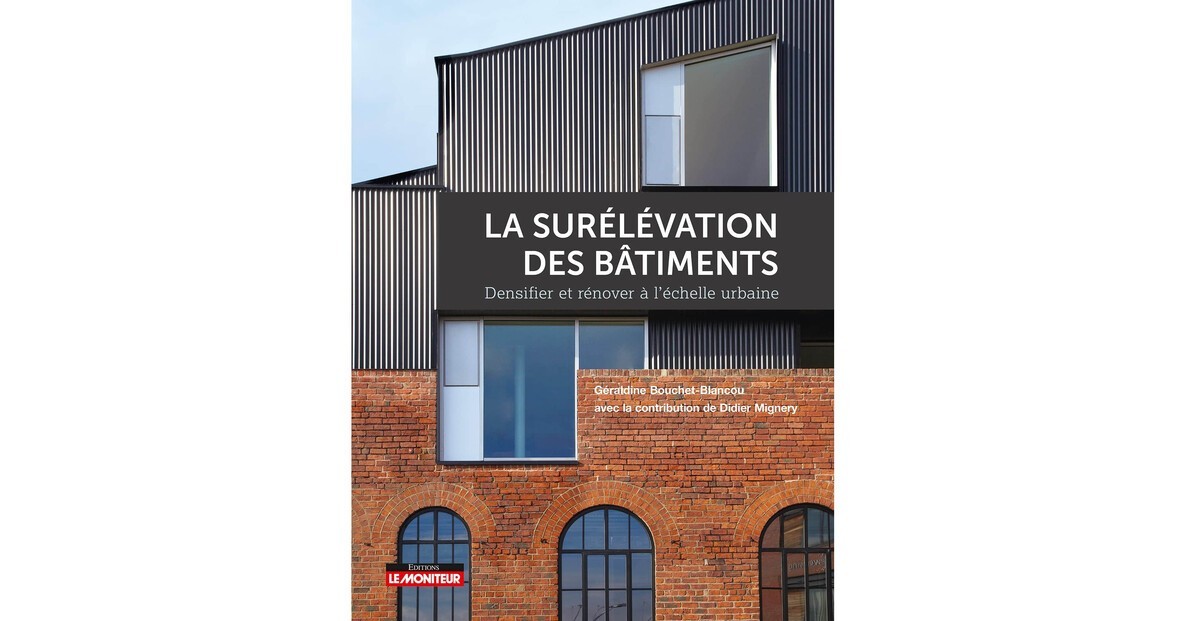Elevation of buildings: create surfaces without any artificialization

Raising buildings, an effective response to the renovation and densification needs of cities? Interview with Géraldine Bouchet-Blancou, Director of Urban and Architectural Research at Upfactor. And co-author of the book The Elevation of Buildings with Didier Mignery, CEO of the company.
How can heightening be a response to urban renewal?
It is a financing lever for the thermal and energy renovation of buildings, as well as a trigger for works. On an urban scale, its capacity to massively renovate the built stock is limited to the potential of exploitable (and actually exploited) aerial land, which is reduced (the elevation will not alone meet the needs to renovate the built environment) but for its part , it is important to use this lever and systematically link the elevation to renovation needs.
Raising is not always the chosen option for urban densification. Is it still suitable?
Heightening is one of the densification tools, alongside other tools whose qualities make it possible to respond to certain contexts. Each context has its ideal densification solution! Elevation generally adapts to most urban contexts, but it is generally a tool used in tense urban sectors, because the additional cost of the project (linked to the risk and the additional work that this represents) requires a financial balance amortized by a exit price of created goods which is a little higher than new construction. Changes would reduce the risk.
What obstacles remain to be lifted (particularly technical, insurance, aesthetic, etc.)? What changes do you advocate?
On the legal side, there is no problem if the project is carried out according to the rules of the art and with a qualified contracting authority in single-ownership operations. In co-ownership, advances have been made such as the simplification of voting rules by abandoning the right of veto of the inhabitants of the top floor in favor of a right of preemption or the application of voting by a qualified majority of the art. 25 (50 and 1 directors' fees) with the possibility of a bridging vote if the resolution retains a third of the votes in the first round, by a majority of those present and represented. However, in the event of densification, the majority of art. 26 is imposed (2/3 of the routes). The modification of this point should be considered to align the interests of the densification of plots already built and the elevations.
On the tax side, the abolition (renewed until the end of 2024) of the tax on the capital gain on real estate in the case of the sale of rights to be raised in co-ownership facilitates the implementation of projects. Its sustainability would nevertheless be a good thing. Beware, however, of the application of the added value in the case of a densification in joint ownership (15K reduction per owner), sometimes associated with an elevation and which can constrain the overall realization.
Are the parking rules of the Town Planning Code a major blocking point?
Yes, but it can just as well be quickly released (because it is derogatory), as soon as the political will of the municipality supports the densification by raising it. Just like the Construction and Housing Code. Some points can be blocking, such as the obligation to bring the common areas into conformity (obligation to create an elevator or stroller/bicycle rooms on the ground floor, etc.), the requalification of the elevations as nine if you exceed half of the surface existing, or accessibility and fire standards (including the widths ofservice roads of buildings and vertical circulations).
But here again, the possibility of derogation generally helps to ensure that the projects are carried out in coherence, while depending, once again, on political support.
The same for the General Tax Code (ex: VAT rate, MPR profits, etc.)?
VAT rates are not really obstacles to the implementation of projects, or only in very rare cases. Only a reduction in VAT on new construction in elevation (from 20 to 5.5%) would possibly be useful, but only in the case of "direct" project management by the syndic of co-ownership in order not to inflate the promoters' margins... Also, concerning aid for renovation (My Prime Renov etc.), its benefits can be combined with the valuation of the right to raise, so there is no problem at this level. The same applies to the Energy Savings Certificates (CEE) bonuses.
Do you see any other obstacles?
Two in particular. The first is the lack of guarantee as to the application of the height rules dictated by the PLU, which makes the whole project process complex and uncertain. The so-called "sacrificial" floors by the promoters increase their margins, in anticipation, and reduce the financing of the work of the condominium by the same amount. The second is the strong reluctance of heritage authorities, of which it is not always possible to have a preliminary opinion on the project.
However, thanks to the "urban" approach, these two points are raised because the elevation is envisaged in consultation and very early in the implementation of the projects, in a filtering and coherent approach corresponding to the strategy of urban development and renovation of the building already in place.
How to combine elevation and environmental issues?
The elevation has the environmental virtue of creating surfaces without any artificialization. If the property created meets a need for use, if it finances part of the renovation and uses bio/geosourced materials, that's even better!
Interview by Stéphanie Obadia, Director of Construction21



